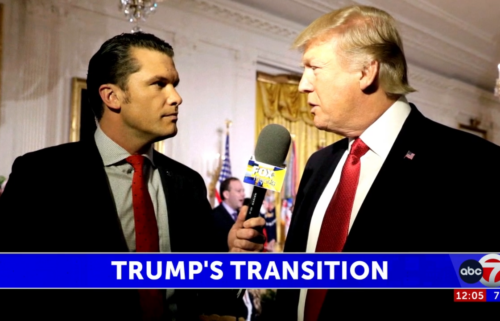In Arizona, Border Patrol encounters new tactics in migrants’ bid to cross into US
Just south of Tucson, Arizona, lies one of the most treacherous stretches of the US-Mexico border: 262 miles of hot, dry, often mountainous terrain.
Patrolling this area — which encompasses some 90,000 square miles — is the responsibility of US Border Patrol Tucson Sector, who we joined for several days of air and ground operations.
Despite the landscape, Border Patrol is seeing a dramatic rise in attempted crossings from Mexico, Central and South America. Encounters are up more than 150% this year from the same period last year. And detections by the Border Patrol’s drones monitoring the area from the air have tripled in the same time period, the agency says.
In a new development, migrants and smugglers are using military-style tactics to avoid detection. Migrants come north dressed like soldiers, wearing camouflage. They wear boots made from sections of carpet to obscure their footsteps. Crucially, they come across in multiple groups as small as one or two people, dropped along the border and told to enter at different times to outwit and overwhelm Border Patrol agents.
“What they’re doing is what we call swarming,” Sabri Dikman, acting deputy chief patrol agent of the Tucson Sector, told CNN. “So instead of in years gone by where we’d have a group of 20, a group of 30 crossing the border, currently we see 10 groups of two, so what happens is they split up, they cross the border, and it takes two agents or one agent to address each one of those individual groups so we become task-saturated.”
These are not families or unaccompanied children. The Border Patrol says that 85% of the migrants they encounter are single adults, some of whom have criminal records.
One of the biggest challenges for the Border Patrol on this part of the border is that migrants coming here don’t want to be caught. They’re not giving themselves up to get into the legal system in the US. They’re trying to cross on their own and avoid the Border Patrol at all costs. So, when they’re spotted, they don’t give themselves up. They run, making the job of Border Patrol agents that much tougher.
Why are they coming now? Many believe that US law and Border Patrol operations changed with the new administration. And smugglers are taking advantage of that perception, lying to migrants about how they will be received at the border.
“We interview almost everyone that we arrest,” Dikman said. “What we’ve found is some of them do have a perception that there’s been a change in immigration laws — a perception that there’s a gap in enforcement on the US border. But that’s their perception. We’re still out there every day doing our job.”
“The laws for immigration have not changed, so our job has not changed,” Jesus Vasavilbaso, Border Patrol Agent, Tucson Sector, told me. “We’re still enforcing the same laws we have been enforcing for many years.”
Responding to this surge is a challenging, highly technical and sometimes dangerous effort, encompassing helicopter patrols, unmanned aerial surveillance via predator drones, and patrols on foot, ATVs and even horseback.
Agents on the ground have access right at their fingertips to a wide array of technology to help in their search. On their phones, they have real-time data drawing on aerial patrols, drone footage, motion sensors and cameras.
We followed agents on a ground patrol a few miles north of the border, after pressure sensors and cameras on a frequently used trail detected multiple migrants. It was a long, exhausting search, several hours hiking in temperatures near 100 degrees.
Walking with the agents, I could not see how they tracked the migrants. The ground is rocky and dry, extremely difficult to spot footprints.
“It takes a special skill a lot of practice from Border Patrol agents to be able to master that,” Jesus Vasavilbaso, a Border Patrol agent in the Tucson Sector, told me. “It takes hours. Sometimes, we track groups for hours. Hopefully we can make this apprehension.”
This time, the agents lost the trail and air assets moved on to another potential sighting.
On air patrol in a chopper piloted by agent Alexis Clark, we receive word from agents on the ground that they spotted another group closer to the border. This group was proving extremely difficult to find, taking refuge in a dry riverbed to hide under cover of trees and vegetation. This familiar tactic turned the agents on foot into trackers, searching for footprints and discarded supplies.
“A group of two under a tree from the air, is — it’s tough,” said Michael Montgomery, the director of the Tucson Air Branch. “So, you know, we have to look for a variation in clothing, a foot sticking out, some movement, just a good eye from an air crew that just spots something that doesn’t look right.”
On patrol, they have two particularly helpful partners: a Belgian shepherd, one member of the Border Patrol’s K-9 unit, and agents on horseback. The horses are fast and durable in the mountains.
After nearly an hour in the air above the search, ascending and descending the ridgelines at altitudes as low as 20 feet, and hours of painstaking searching by the agents on the ground, they find their target: a group of seven migrants — all men — in their tell-tale camouflage.
This is the new reality: not one, but two surges on the southern border. In Texas, it is largely families and children, who often turn themselves in to authorities. Here in Arizona, it is single adults, directed like soldiers, doing all they can to avoid capture and come north.




